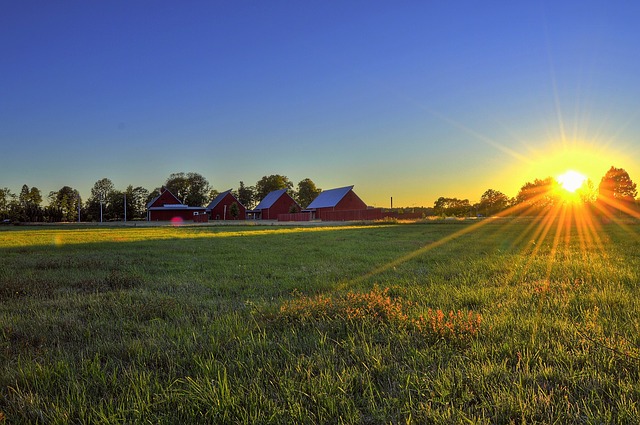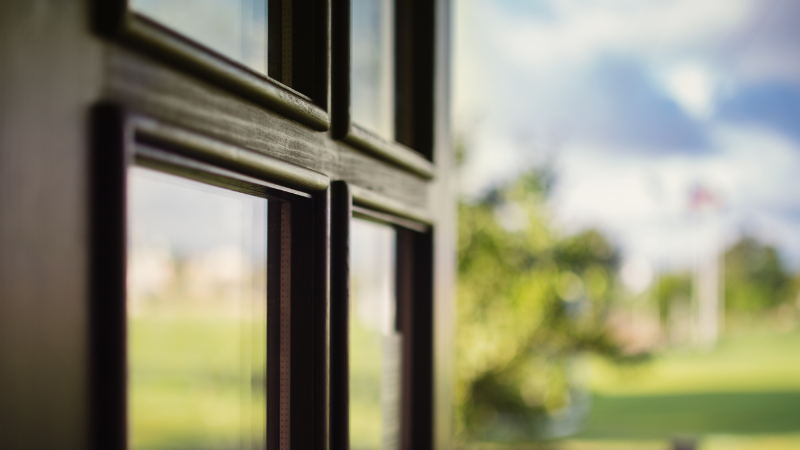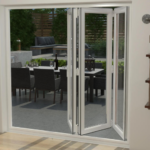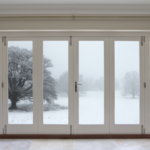Hot weather is a mixed blessing. While it’s great when you’re out enjoying an ice-cream in the middle of the park, or a round or two in the local beer garden, sunlight can inflict damage on your property over both the long and short term. Certain doors will expand if they get too hot – sometimes to the point where they won’t even open properly! This problem is particularly pressing if your door faces southward, as it’ll receive more sunlight during the daytime.
So what contributes to hot-weather trouble for doors? And what are the best external doors for a south-facing entry?
Material
For the most part, doors are made from three different materials. There are timber ones, uPVC ones, and aluminium ones. Things get a bit more complicated when we consider composite doors, which are made from a range of different materials on the inside, however the panels themselves might look. Most modern front doors are composites.
When it comes to sunlight, we should be concerned mostly about the material on the front of the door – which, after all, is what’ll be receiving the most heat.
Aluminium (like other metals) is an extremely good conductor of heat. If exposed to direct sunlight for hours on end, it will become scorching hot. With that said, it’s also capable of holding its shape even when the temperature gets hot. Just think about aluminium cookware that gets hauled over a gas burner every day for twenty years without the slightest deformation.
Timber is made from natural fibres, which will warp a little bit every time the temperature (or air-pressure, or humidity) changes. Direct exposure to ultraviolet light will damage unprotected wood, and thus a protective finish is critical.
Colour
Some colours will be more vulnerable to sunlight than others. Specifically, lighter colours will repel sunlight while darker ones will heat up. We’ve all got into a car with dark upholstery to find that the interior has become toasty warm. Therefore you might suspect that a white door uPVC door would be best. However, cheaper uPVC doors tend to discolour more easily, which might mean that a white door put in direct sunlight for several years might turn a rather more unpleasant shade of yellow.
Before buying any door, it’s worth thinking not only about how it looks now, but how it will look in years to come. With that said, many modern uPVC doors will be able to withstand direct sunlight while still retaining their colour.
How Do I Protect My Front Door from the Sun?

The best way to protect your front door from direct sunlight is to ensure that it doesn’t receive any. This can be achieved via several methods.
Plants
If your door is in the shade of a nearby hedgerow, then it will be protected from the sun. How well this solution will work for you will depend on the makeup of your front garden. If it’s mostly clear, then planting a single tree near your front door might not be worthwhile. However, if the sunlight is creeping through, and the aesthetics of your garden allow for it, then a plant might provide some decoration while protecting your front door.
Installing an Awning
An awning is like a miniature canopy which extends over your doorstep. When the sun is high in the sky, it will keep your door in the shade. Of course, when the sun is coming in from an acute angle, it won’t work quite so well – but by that late in the day, sunlight exposure isn’t really a problem.
This modification is relatively inexpensive, and won’t require that you obtain planning permission. If you choose the right awning, it will look the part – and will also provide you with a place to shelter if you’re caught in the rain and you’re struggling to get your keys out.
Treatments
We’ve already touched on a few of the treatments you might give to a timber door. If you’re using an inferior paint, then you might find that it doesn’t adhere properly to the underlying wood, and will need to be re-sanded and re-applied fairly constantly. If your door is exposed, then the best solution is to use a more robust paint – you can find formulas specifically designed for external wooden doors; so track them down.
Transparent finishes are what will ensure that the natural grain of the wood is allowed to shine through. But they’re also what will allow the ultraviolet light to go in the other direction. If you’re after the natural look, then it’s worth considering a darker woodstain: one with UV protection built-in.
Installing a Front Porch
You might take things a stage further and install a front porch. Porches come in a range of sizes to suit a range of tastes and budgets. You might pick up one that you can assemble yourself. On the other hand, you might go for something that’s more akin to a home extension, with bricks, mortar and foundations. The cheaper sort will do a job keeping your front door protected, but if you’d prefer something that also looks great (and functions as a repository for coats, shoes and umbrellas) then a more substantial porch might be what’s required.
In Conclusion
We’ve covered several ways to keep your door protected even if it’s south-facing. But there’s one solution that’s a little more drastic: replace the entire door. Doors have a natural lifespan of decades, and if you’re still using the same door that was there thirty years ago, there are probably several good reasons for an upgrade – not least of which is the security improvement you’ll see.
With that said, if your door is still exposed to direct sunlight for large parts of the day, then even a modern replacement will still suffer many of the same problems as your existing door. As such it’s worth taking some of the steps we’ve outlined here even if you’re having a new door installed.





